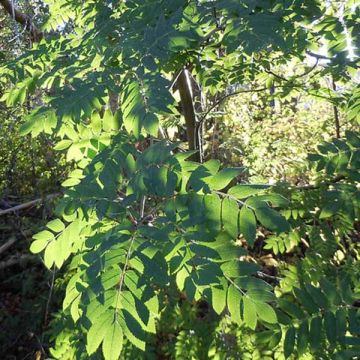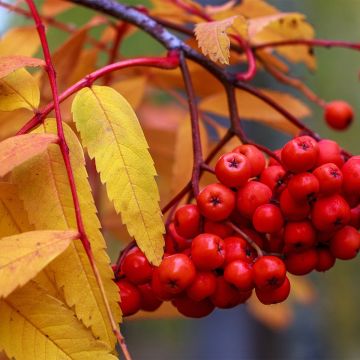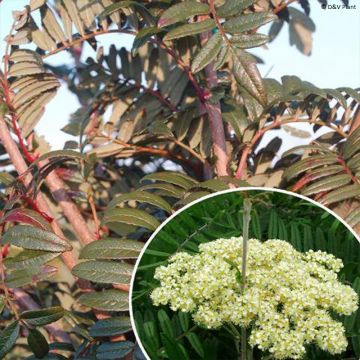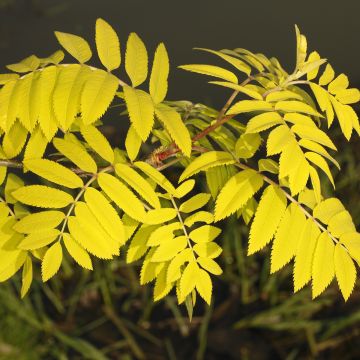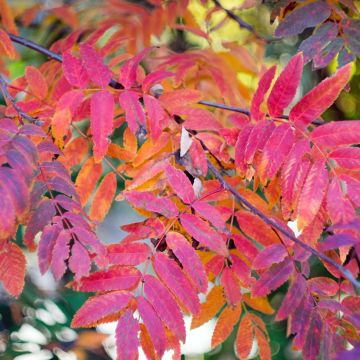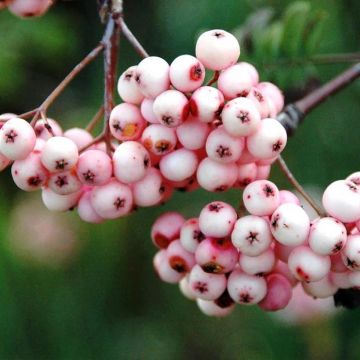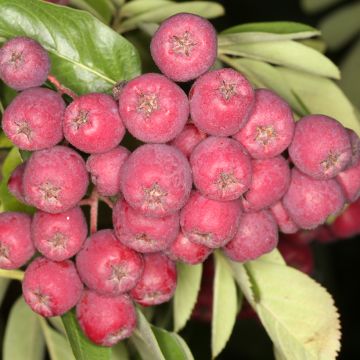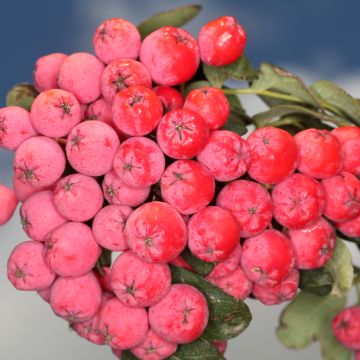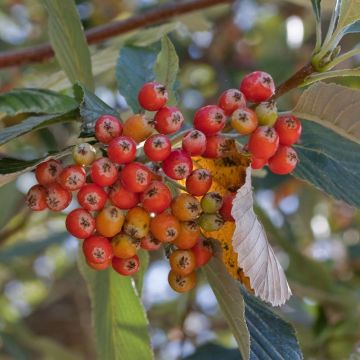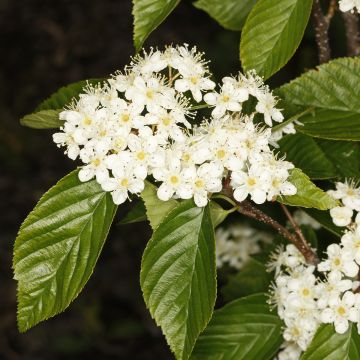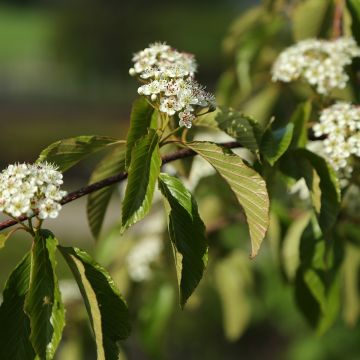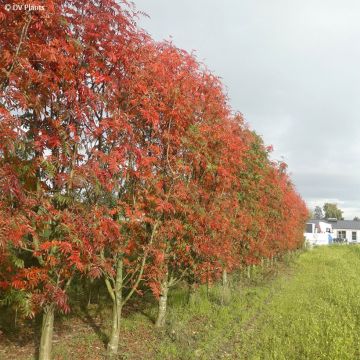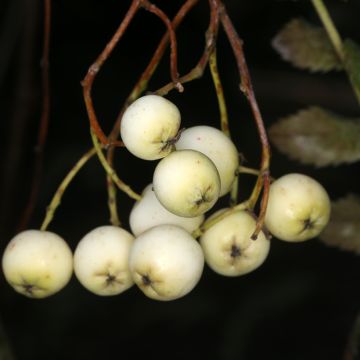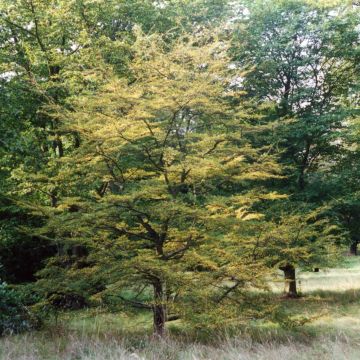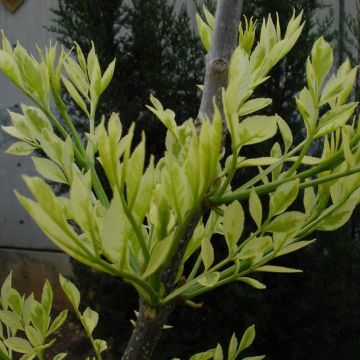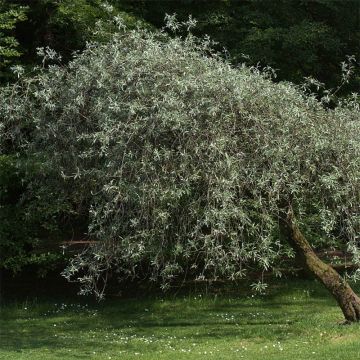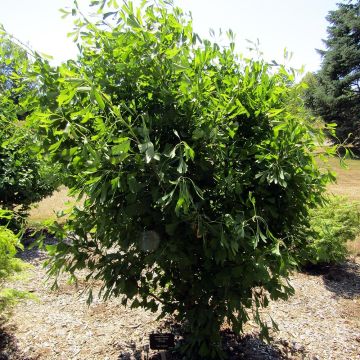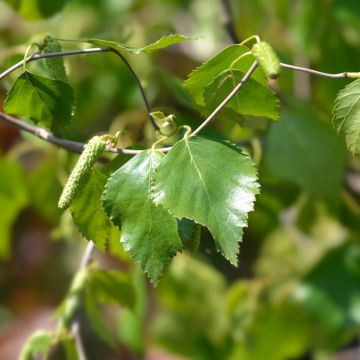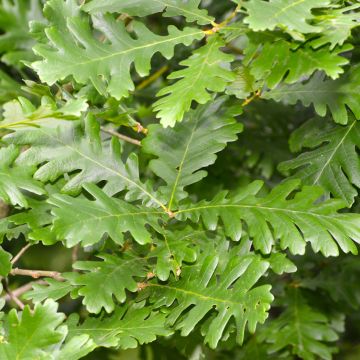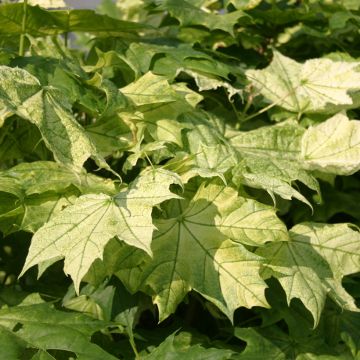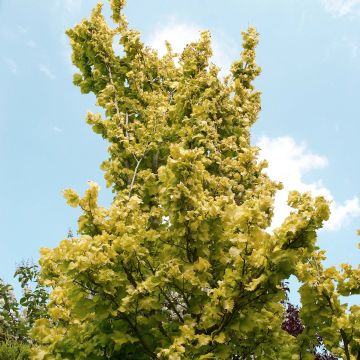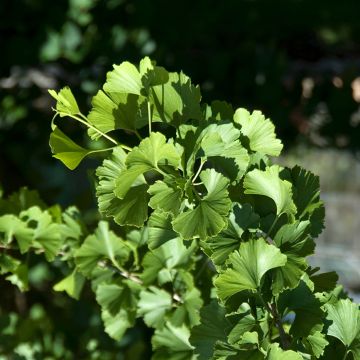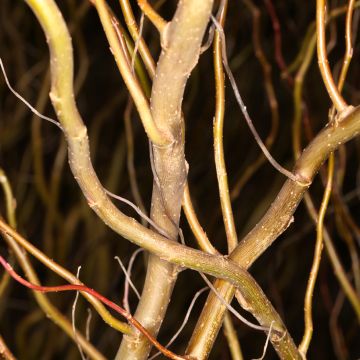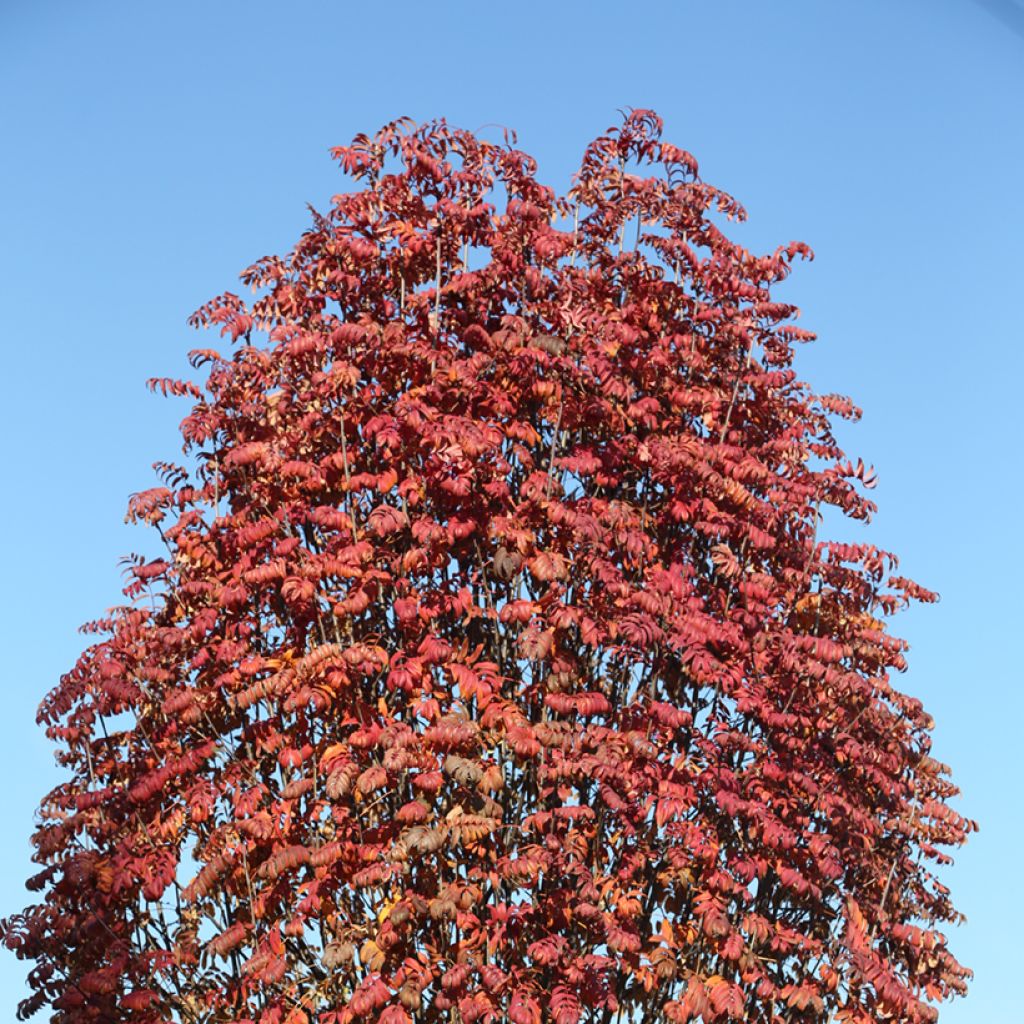

Sorbus aucuparia Fingerprint - Rowan
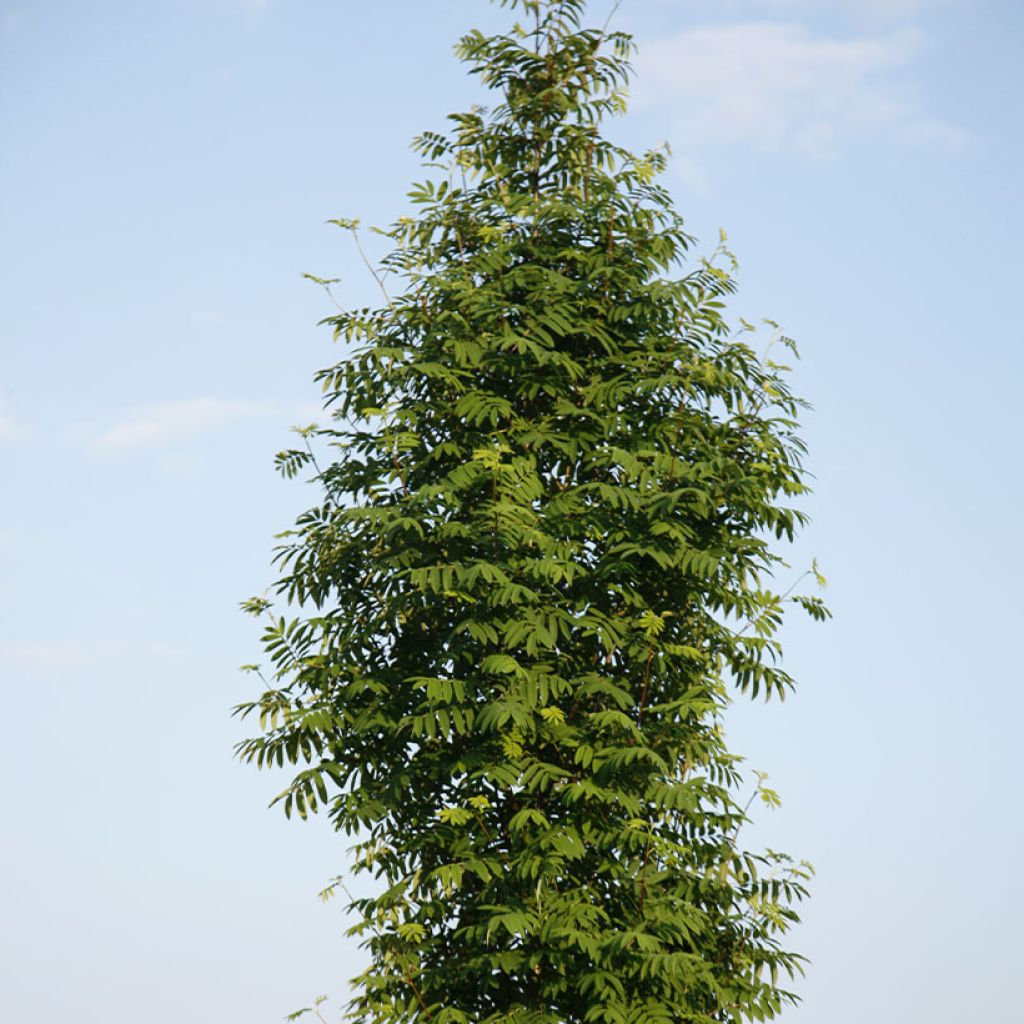

Sorbus aucuparia Fingerprint - Rowan
Sorbus aucuparia Fingerprint - Rowan
Sorbus aucuparia 'Fingerprint'PBR
Rowan, Mountain Ash
Why not try an alternative variety in stock?
View all →This plant carries a 24 months recovery warranty
More information
We guarantee the quality of our plants for a full growing cycle, and will replace at our expense any plant that fails to recover under normal climatic and planting conditions.
Oversize package: home delivery by special carrier from €6.90 per order..
Express home delivery from €8.90.
Does this plant fit my garden?
Set up your Plantfit profile →
Description
Sorbus aucuparia 'Fingerprint' is a cultivar of rowan that is attractive in more ways than one. Its architectural, columnar habit is elegant and allows it to be planted in small spaces. Its finely compound foliage is equally ornamental, and its dark green hue forms a superb backdrop to the white spring flowering. This later develops in late summer into small, bright, slightly orange-red berries, which enhance its decorative interest and provide a food source for birds. Very hardy and accommodating in terms of soil and climate, it is only sensitive to excessive drought.
The rowan belongs to the very large and important family of Rosaceae, which includes about 5000 species of wild plants (burnet, wild rose...), ornamental plants (Photinia, Kerria, Pyracantha...) and the vast majority of fruit trees (Apple, Apricot...). The Sorbus genus comprises over a hundred species, divided between the rowans, with compound leaves, and the whitebeams, with simple leaves. The rowan, or Sorbus aucuparia, is a species found in northern Europe up to Iceland, as well as in Asia, reaching Siberia and even Japan. Growing quite rapidly in the first 20 years, its growth then slows down, and its longevity is often less than 100 years. Its pyramidal silhouette is elegant, typically measuring less than 10 m in height, but occasionally exceeding 15 m.
'Fingerprint' is a horticultural variety of Belgian origin obtained in the 1990s and shortly after its market launch received the award for "Best Newcomer" at the International Nursery Trade Fair Groot Groen Plus in Zundert (Netherlands). It boasts numerous ornamental qualities that earn it a well-deserved place in our gardens. With a fairly rapid growth rate of 30 to 70 cm per year, it forms a columnar or tapered conical tree, reaching 5 m in height and 2 m in width after 10 years. In 20 years, it will reach 8 to 10 m in height and 3 to 4 m in width, stabilising thereafter. Its architectural, narrow habit allows it to be planted in small gardens, or combined with several specimens in a larger space to create a contemporary scene.
Its foliage is truly superb, consisting of odd-pinnate leaves, meaning composed of leaflets in odd numbers, one opposite the other along the leaf rib, with the last one extending it. The finely toothed leaflets are very slender and pointed, evoking the delicacy of certain ferns. Their green colour is quite dark, and the dark cone formed by the plant stands out particularly well against a light facade. Around the end of April, depending on the region, umbellate clusters of about ten centimetres in diameter appear, consisting of small white flowers that create a very pleasant contrast against the dark foliage. These slightly fragrant flowers are honey-producing, thus adding to this plant's utility for wildlife. After fertilisation, the flowers develop into coral-red to slightly orange berries, gathered at the end of summer in very ornamental clusters against the still green foliage. These decorative fruits persist quite long on the plant, serving as a larder for the birds that adore them. In autumn, the tree reveals another facet of its aesthetic talent when its finely cut foliage takes on sumptuous warm colours, ranging from yellow to red to orange, before finally falling to the ground.
Rowan 'Fingerprint' is a truly attractive cultivar that will bring a touch of distinction to the garden. Very hardy and particularly resistant to diseases, it thrives in full sun in ordinary, not too dry soil. Pair it with colourful foliage to create a contrasting quality scene, such as Physocarpus opulifolius 'Angel Gold', an upright ninebark standing 3 m tall, whose golden yellow foliage will be very interesting at the base of your rowan. Also belonging to the Rosaceae family, its white spring flowering will provide you with decorative red fruits at the end of the season. A purple smoke tree, such as Cotinus 'Grace', will complete your vibrant scene, especially in autumn when its ovate foliage turns bright red. Its summer flowering, with its vapour-like appearance, will delight children with its resemblance to candy floss. And to play on the differences in silhouette, insert a weeping form into your border, such as Cercis canadensis 'Cascading Hearts', a charming small dome-shaped tree whose still bare branches are covered with pink-purple flowers early in spring before the leaves appear. These leaves are almost round and turn yellow in autumn, adding their touch of colour to your final fireworks display.
Report an error about the product description
Sorbus aucuparia Fingerprint - Rowan in pictures


Plant habit
Flowering
Foliage
Botanical data
Sorbus
aucuparia
'Fingerprint'PBR
Rosaceae
Rowan, Mountain Ash
Cultivar or hybrid
Other Sorbus - Mountain Ash
Planting and care
Sorbus aucuparia 'Fingerprint' is best planted in autumn in any soil, preferably moist (it tolerates dry conditions for short periods), slightly acidic to neutral (it also accepts alkaline soils, provided there is no excess active lime). Overall, it is not very demanding and adapts to loamy, clayey, or sandy soils. Dig a planting hole 60 to 80 cm wide and add some compost at the bottom if the soil is poor, along with slightly acidic potting soil (pH around 6-6.5). Soak the container in a bucket to thoroughly moisten the root ball before placing it in the planting hole. Backfill and water generously; water during the first two years to allow the tree to establish well.
This tree thrives in full sun and will also tolerate partial shade, especially in warm climates. It is a pioneer species capable of establishing itself in poor soils. It is very hardy, only vulnerable to excessive or prolonged drought, during which it must be watered adequately.
Planting period
Intended location
Care
This item has not been reviewed yet - be the first to leave a review about it.
Trees and large shrubs
Haven't found what you were looking for?
Hardiness is the lowest winter temperature a plant can endure without suffering serious damage or even dying. However, hardiness is affected by location (a sheltered area, such as a patio), protection (winter cover) and soil type (hardiness is improved by well-drained soil).

Photo Sharing Terms & Conditions
In order to encourage gardeners to interact and share their experiences, Promesse de fleurs offers various media enabling content to be uploaded onto its Site - in particular via the ‘Photo sharing’ module.
The User agrees to refrain from:
- Posting any content that is illegal, prejudicial, insulting, racist, inciteful to hatred, revisionist, contrary to public decency, that infringes on privacy or on the privacy rights of third parties, in particular the publicity rights of persons and goods, intellectual property rights, or the right to privacy.
- Submitting content on behalf of a third party;
- Impersonate the identity of a third party and/or publish any personal information about a third party;
In general, the User undertakes to refrain from any unethical behaviour.
All Content (in particular text, comments, files, images, photos, videos, creative works, etc.), which may be subject to property or intellectual property rights, image or other private rights, shall remain the property of the User, subject to the limited rights granted by the terms of the licence granted by Promesse de fleurs as stated below. Users are at liberty to publish or not to publish such Content on the Site, notably via the ‘Photo Sharing’ facility, and accept that this Content shall be made public and freely accessible, notably on the Internet.
Users further acknowledge, undertake to have ,and guarantee that they hold all necessary rights and permissions to publish such material on the Site, in particular with regard to the legislation in force pertaining to any privacy, property, intellectual property, image, or contractual rights, or rights of any other nature. By publishing such Content on the Site, Users acknowledge accepting full liability as publishers of the Content within the meaning of the law, and grant Promesse de fleurs, free of charge, an inclusive, worldwide licence for the said Content for the entire duration of its publication, including all reproduction, representation, up/downloading, displaying, performing, transmission, and storage rights.
Users also grant permission for their name to be linked to the Content and accept that this link may not always be made available.
By engaging in posting material, Users consent to their Content becoming automatically accessible on the Internet, in particular on other sites and/or blogs and/or web pages of the Promesse de fleurs site, including in particular social pages and the Promesse de fleurs catalogue.
Users may secure the removal of entrusted content free of charge by issuing a simple request via our contact form.
The flowering period indicated on our website applies to countries and regions located in USDA zone 8 (France, the United Kingdom, Ireland, the Netherlands, etc.)
It will vary according to where you live:
- In zones 9 to 10 (Italy, Spain, Greece, etc.), flowering will occur about 2 to 4 weeks earlier.
- In zones 6 to 7 (Germany, Poland, Slovenia, and lower mountainous regions), flowering will be delayed by 2 to 3 weeks.
- In zone 5 (Central Europe, Scandinavia), blooming will be delayed by 3 to 5 weeks.
In temperate climates, pruning of spring-flowering shrubs (forsythia, spireas, etc.) should be done just after flowering.
Pruning of summer-flowering shrubs (Indian Lilac, Perovskia, etc.) can be done in winter or spring.
In cold regions as well as with frost-sensitive plants, avoid pruning too early when severe frosts may still occur.
The planting period indicated on our website applies to countries and regions located in USDA zone 8 (France, United Kingdom, Ireland, Netherlands).
It will vary according to where you live:
- In Mediterranean zones (Marseille, Madrid, Milan, etc.), autumn and winter are the best planting periods.
- In continental zones (Strasbourg, Munich, Vienna, etc.), delay planting by 2 to 3 weeks in spring and bring it forward by 2 to 4 weeks in autumn.
- In mountainous regions (the Alps, Pyrenees, Carpathians, etc.), it is best to plant in late spring (May-June) or late summer (August-September).
The harvesting period indicated on our website applies to countries and regions in USDA zone 8 (France, England, Ireland, the Netherlands).
In colder areas (Scandinavia, Poland, Austria...) fruit and vegetable harvests are likely to be delayed by 3-4 weeks.
In warmer areas (Italy, Spain, Greece, etc.), harvesting will probably take place earlier, depending on weather conditions.
The sowing periods indicated on our website apply to countries and regions within USDA Zone 8 (France, UK, Ireland, Netherlands).
In colder areas (Scandinavia, Poland, Austria...), delay any outdoor sowing by 3-4 weeks, or sow under glass.
In warmer climes (Italy, Spain, Greece, etc.), bring outdoor sowing forward by a few weeks.



































